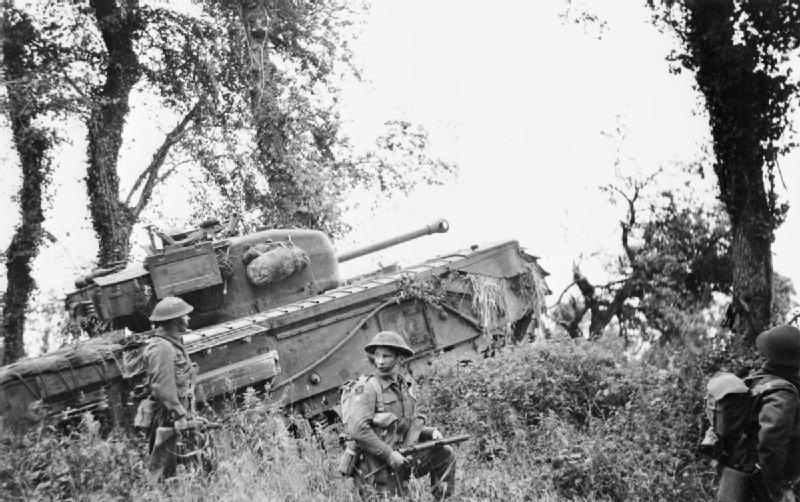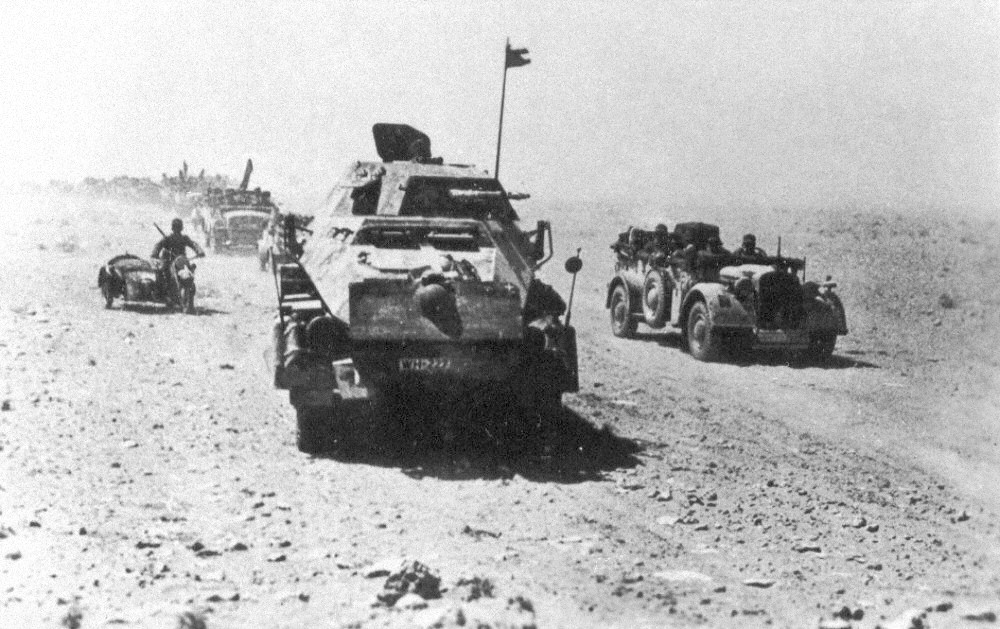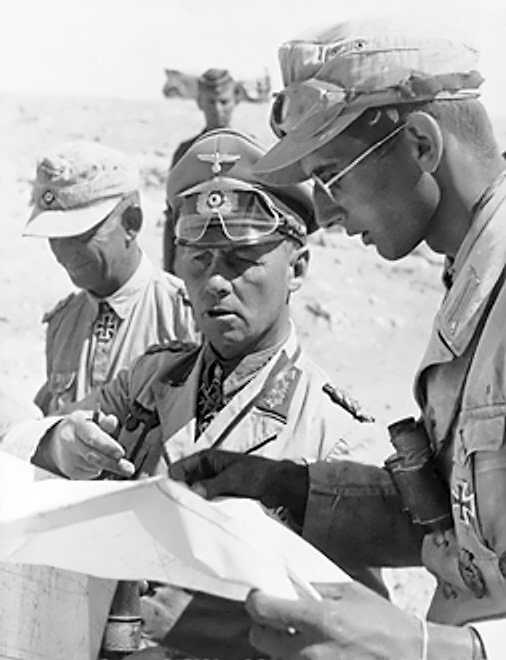|
7th Royal Tank Regiment
The 7th Royal Tank Regiment (7th RTR) was an armoured regiment of the British Army from 1917 until disbandment in 1959. History The 7th Royal Tank Regiment was part of the Royal Tank Regiment, itself part of the Royal Armoured Corps. The regiment originally saw action as G Battalion, Tank Corps in 1917. Part of the 1st Army Tank Brigade, 7th RTR saw service in France in May 1940, alongside the 4th Royal Tank Regiment and the 50th (Northumbrian) Infantry Division during the Battle of Dunkirk and was soon evacuated at Dunkirk, and abandoning most of their vehicles. The 7th RTR returned to England and was sent overseas later in the year. In December 1940, as part of the British Western Desert Force in Egypt, the 7th RTR contained Matilda infantry tanks and supported the 11th Indian Infantry Brigade of the 4th Indian Infantry Division. The regiment attacked and destroyed the Italian " Maletti Group" at the Nibeiwa Camp. The 7th RTR also supported the attack of the 11th Briga ... [...More Info...] [...Related Items...] OR: [Wikipedia] [Google] [Baidu] |
Armoured Warfare
Armoured warfare or armored warfare (mechanized forces, armoured forces or armored forces) (American English; see spelling differences), is the use of armored fighting vehicles in modern warfare. It is a major component of modern methods of war. The premise of armoured warfare rests on the ability of troops to penetrate conventional defensive lines through use of manoeuvre by armoured units. Much of the application of armoured warfare depends on the use of tanks and related vehicles used by other supporting arms such as infantry fighting vehicles, self-propelled artillery, and other combat vehicles, as well as mounted combat engineers and other support units. The doctrine of armoured warfare was developed to break the static nature of World War I trench warfare on the Western Front, and return to the 19th century school of thought that advocated manoeuvre and decisive battle outcomes in military strategy. World War I Modern armoured warfare began during the First Wor ... [...More Info...] [...Related Items...] OR: [Wikipedia] [Google] [Baidu] |
4th Infantry Division (India)
The 4th Indian Infantry Division, also known as the Red Eagle Division, is an infantry division of the Indian Army. This division of the British Indian Army was formed in Egypt in 1939 during the Second World War. During the Second World War, it took part in campaigns in East Africa (Eritrea and Sudan), Syria, North Africa and Italy. Post independence, the division is part of the I Corps and headquartered at Prayagraj. History North Africa During the war, the 4th Indian Division was in the vanguard of nine campaigns in the Mediterranean theatre. Major-General The Hon. P. Gerald Scarlett appears to have been the division's first commander, from October 1939 to January 1940. The British 14th Infantry Brigade was attached to the division from 1 June to 20 July 1940; the British 16th Infantry Brigade was attached from 9 September 1940 to 14 December 1940. In the first of Archibald Wavell's operations in Egypt, as part of the Western Desert Force, it took part in Operati ... [...More Info...] [...Related Items...] OR: [Wikipedia] [Google] [Baidu] |
1st Royal Tank Regiment
The 1st Royal Tank Regiment (1 RTR) was an armoured regiment of the British Army. It is part of the Royal Tank Regiment, itself part of the Royal Armoured Corps and operationally under 12th Armoured Infantry Brigade. History Formation The regiment was originally formed as A Company, Heavy Section, Machine Gun Corps in May 1916 during the First World War (1914–1918). It took part in the first ever tank offensive in 1916 and saw action on the Western Front again in the Battle of Cambrai in November 1917 and later in the Hundred Days Offensive. Remaining active in the army during the interwar period, in 1939 it was renamed the 1st Royal Tank Regiment. Second World War During the Second World War (1939–1945) the regiment took part in the Siege of Tobruk in the summer of 1941 and the Battle of El Alamein in October 1942, the advance up Italy in late 1943, the Normandy landings in June 1944 and the Western Allied invasion of Germany in 1945. From the Battle of El Alamein ... [...More Info...] [...Related Items...] OR: [Wikipedia] [Google] [Baidu] |
Siege Of Dunkirk (1944)
The Battle of Dunkirk was a conflict between French and British allies and German forces in 1940 during the Second World War. Battle of Dunkirk, Raid on Dunkirk or Siege of Dunkirk may also refer to: *Battle of Dunkirk (1383), a battle between English and Franco-Flemish forces that Frans Ackerman fought in * Battle of Dunkirk (1639), a naval action during the Eighty Years' War between a Dutch fleet and the Spanish Dunkirk Squadron on 18 February * Battle of the Dunes (1658) or the Battle of Dunkirk, a battle between Allied and Spanish forces *Siege of Dunkirk (1793), a siege by British and Hanoverian forces against a French garrison during the French Revolutionary War * Raid on Dunkirk (1800), a conflict between British and French naval forces during the French Revolutionary War *Siege of Dunkirk (1944–45), a siege by Allied forces against a German garrison during the Second World War See also * Dunkirk (other) * Dunkirk evacuation The Dunkirk evacuation, codenamed ... [...More Info...] [...Related Items...] OR: [Wikipedia] [Google] [Baidu] |
Operation Astonia
Operation Astonia was the codename for an Allied attack on the German-held Channel port of Le Havre in France, during the Second World War. The city had been declared a ''Festung'' (fortress) by Hitler, to be held to the last man. Fought from 10 to 12 September 1944, the Allied objective was to secure the harbour facilities intact, to deliver supplies to the Allied armies in Continental Europe. The Allies refused to let the civilian population be evacuated, despite offers of free passage by the fortress commander. From 26 August, Royal Navy ships and Royal Air Force aircraft carried out a blockade and an extensive preparatory bombardment of the city, which killed over 2,000 civilians and 19 German troops. The land attack was carried out by British infantry, aided by specialist armoured vehicles from the 79th Armoured Division, including Canadian troops. The German garrison of about 11,000 men surrendered on 12 September; the port was badly damaged but it was re-opened on 9 October. ... [...More Info...] [...Related Items...] OR: [Wikipedia] [Google] [Baidu] |
Operation Epsom
Operation Epsom, also known as the First Battle of the Odon, was a British offensive in the Second World War between 26 and 30 June 1944, during the Battle of Normandy. The offensive was intended to outflank and seize the German-occupied city of Caen, an important Allied objective, in the early stages of Operation Overlord, the Allied invasion of north-west Europe. Preceded by Operation Martlet to secure the right flank of the advance, Operation Epsom began early on 26 June, with units of the 15th (Scottish) Infantry Division advancing behind a rolling artillery barrage. Air cover was sporadic for much of the operation, because poor weather in England forced the last-minute cancellation of bomber support. Accompanied by the 31st Tank Brigade, the 15th (Scottish) Division made steady progress and by the end of the first day had overrun much of the German outpost line, although some difficulties remained in securing the flanks. In mutually-costly fighting over the followin ... [...More Info...] [...Related Items...] OR: [Wikipedia] [Google] [Baidu] |
Operation Overlord
Operation Overlord was the codename for the Battle of Normandy, the Allied operation that launched the successful invasion of German-occupied Western Europe during World War II. The operation was launched on 6 June 1944 (D-Day) with the Normandy landings. A 1,200-plane airborne assault preceded an amphibious assault involving more than 5,000 vessels. Nearly 160,000 troops crossed the English Channel on 6 June, and more than two million Allied troops were in France by the end of August. The decision to undertake a cross-channel invasion in 1944 was taken at the Trident Conference in Washington in May 1943. General Dwight D. Eisenhower was appointed commander of Supreme Headquarters Allied Expeditionary Force, and General Bernard Montgomery was named commander of the 21st Army Group, which comprised all the land forces involved in the invasion. The coast of Normandy of northwestern France was chosen as the site of the invasion, with the Americans assigned to land at sect ... [...More Info...] [...Related Items...] OR: [Wikipedia] [Google] [Baidu] |
31st Armoured Brigade
The 31st Armoured Brigade was an armoured brigade formation of the British Army, created during the Second World War. Unit history The 31st Army Tank Brigade was formed in the UK on 15 January 1941, in Northern Command and comprised the 9th Royal Tank Regiment and 10th Royal Tank Regiment. The 141st Regiment Royal Armoured Corps (141 RAC) was added on 8 November 1941 and on 29 November the brigade was transferred to South Eastern Command. In May 1942 the unit was renamed the 31st Tank Brigade and was transferred to the 53rd (Welsh) Infantry Division, as part as an experimental "mixed" formation of a tank and two infantry brigades. The experiment ended on 10 September 1943, as it was judged unsuitable for the terrain in north-western Europe. On 1 April 1943, the 10th RTR was renamed 7th Royal Tank Regiment, after the original was destroyed at the Battle of Gazala (May–June 1942). The 31st Tank Brigade, equipped with Churchill tanks, was a follow-up unit in the Normandy la ... [...More Info...] [...Related Items...] OR: [Wikipedia] [Google] [Baidu] |
10th Royal Tank Regiment
The 10th Royal Tank Regiment (10 RTR) was an armoured regiment of the British Army during World War II. It was part of the Royal Tank Regiment, itself part of the Royal Armoured Corps. In February 1943, it was redesignated as 7th Royal Tank Regiment, replacing the previous 7th, which had been lost at Tobruk Tobruk or Tobruck (; grc, Ἀντίπυργος, ''Antipyrgos''; la, Antipyrgus; it, Tobruch; ar, طبرق, Tubruq ''Ṭubruq''; also transliterated as ''Tobruch'' and ''Tubruk'') is a port city on Libya's eastern Mediterranean coast, near t .... References Royal Tank Regiment Royal Tank Regiment 010 {{UK-mil-unit-stub ... [...More Info...] [...Related Items...] OR: [Wikipedia] [Google] [Baidu] |
First Battle Of El Alamein
The First Battle of El Alamein (1–27 July 1942) was a battle of the Western Desert campaign of the Second World War, fought in Egypt between Axis (German and Italian) forces of the Panzer Army Africa—which included the under Field Marshal Erwin Rommel—and Allied ( British Imperial and Commonwealth) forces of the Eighth Army under General Claude Auchinleck. The British prevented a second advance by the Axis forces into Egypt. Axis positions near El Alamein, only from Alexandria, were dangerously close to the ports and cities of Egypt, the base facilities of the Commonwealth forces and the Suez Canal. However, the Axis forces were too far from their base at Tripoli in Libya to remain at El Alamein indefinitely, which led both sides to accumulate supplies for more offensives, against the constraints of time and distance. The battle and the Second Battle of El Alamein three months later remain important to some of the countries that took part. In New Zealand, this ... [...More Info...] [...Related Items...] OR: [Wikipedia] [Google] [Baidu] |
Battle Of Gazala
The Battle of Gazala (near the village of ) was fought during the Western Desert Campaign of the Second World War World War II or the Second World War, often abbreviated as WWII or WW2, was a world war that lasted from 1939 to 1945. It involved the World War II by country, vast majority of the world's countries—including all of the great power ..., west of the port of Tobruk in Libya, from 26 May to 21 June 1942. Axis powers, Axis troops of the ( Erwin Rommel) consisting of Nazi Germany, German and Kingdom of Italy, Italian units fought the British Eighth Army (United Kingdom), Eighth Army (General (United Kingdom), General Sir Claude Auchinleck, also Commander-in-chief, Commander-in-Chief Middle East Command, Middle East) composed mainly of British Commonwealth, Indian and Free French troops. The Axis troops made a decoy attack in the north as the main attack moved round the southern flank of the Gazala position. Unexpected resistance at the south end of the ... [...More Info...] [...Related Items...] OR: [Wikipedia] [Google] [Baidu] |
Tobruk
Tobruk or Tobruck (; grc, Ἀντίπυργος, ''Antipyrgos''; la, Antipyrgus; it, Tobruch; ar, طبرق, Tubruq ''Ṭubruq''; also transliterated as ''Tobruch'' and ''Tubruk'') is a port city on Libya's eastern Mediterranean coast, near the border with Egypt. It is the capital of the Butnan District (formerly Tobruk District) and has a population of 120,000 (2011 est.)."Tobruk" (history), ''Encyclopædia Britannica'', 2006, Britannica Concise Encyclopedia, ''Concise.Britannica.com'BC-Tobruk. Tobruk was the site of an ancient Greek colony and, later, of a Roman fortress guarding the frontier of Cyrenaica. Over the centuries, Tobruk also served as a waystation along the coastal caravan route. By 1911, Tobruk had become an Italian military post, but during World War II, Allied forces, mainly the Australian 6th Division, took Tobruk on 22 January 1941. The Australian 9th Division (" The Rats of Tobruk") pulled back to Tobruk to avoid encirclement after actions at Er R ... [...More Info...] [...Related Items...] OR: [Wikipedia] [Google] [Baidu] |

.jpg)


_mit_Infanterie.jpg)



